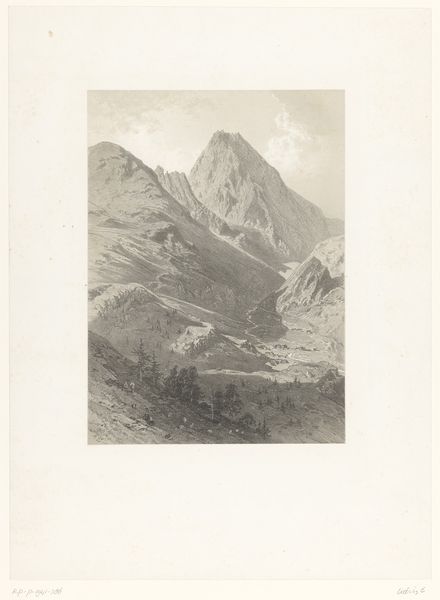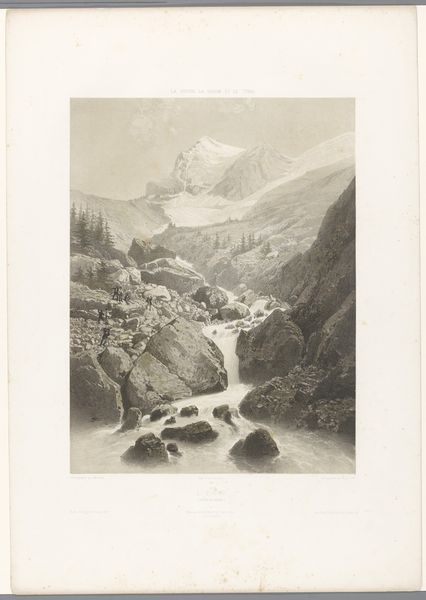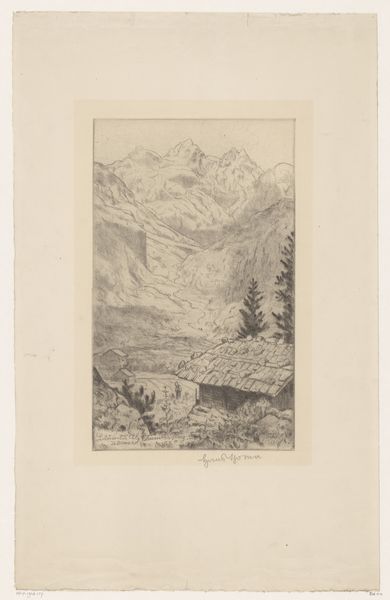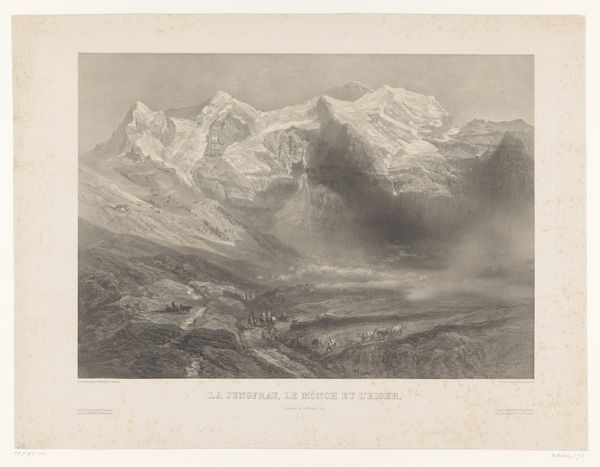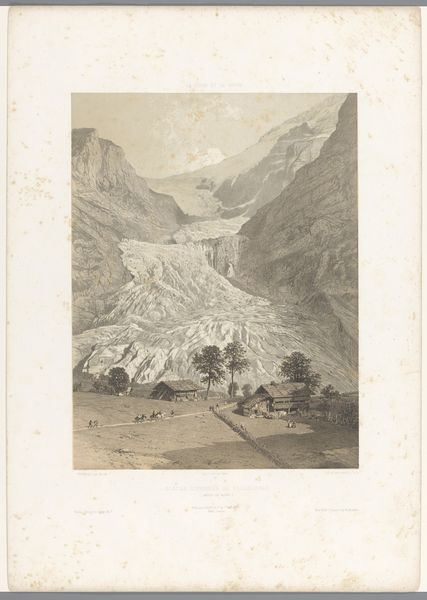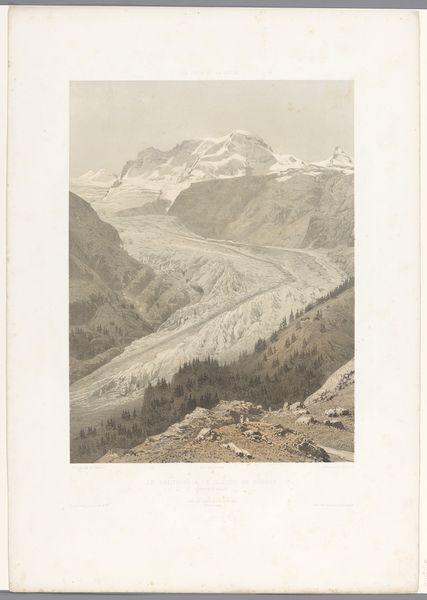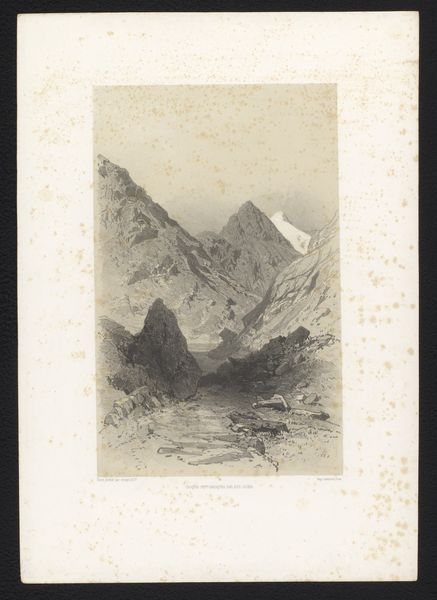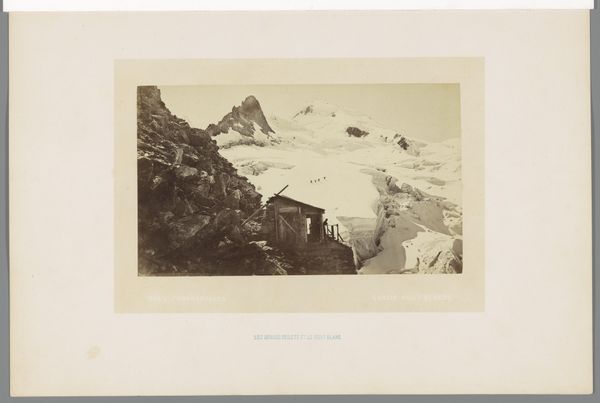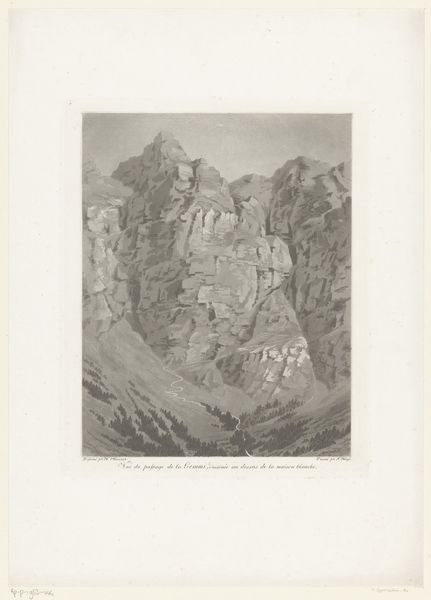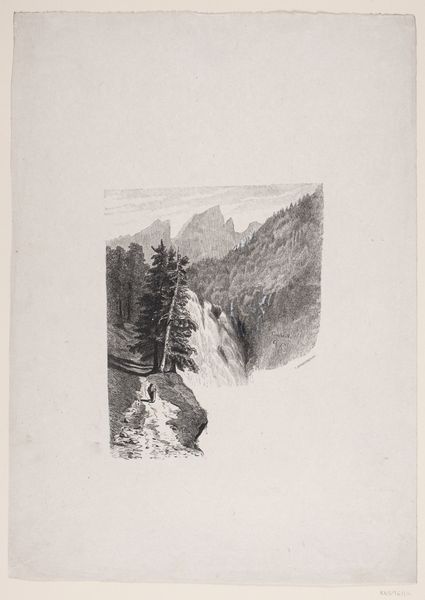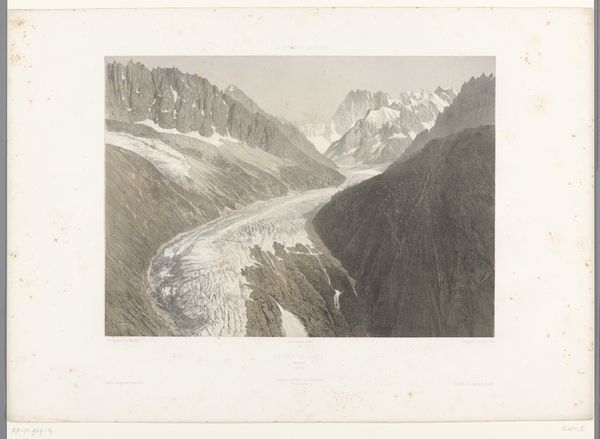
Dimensions: height 401 mm, width 304 mm
Copyright: Rijks Museum: Open Domain
Editor: Here we have "Alpenlandschap," a gelatin-silver print by Charles Soulier, dating from around 1860 to 1870. The mountains are majestic and imposing, yet the tonal range gives it a somewhat melancholic atmosphere. What do you see in this piece? Curator: The image immediately places us within a historical discourse concerning Romanticism’s engagement with nature. How does this resonate today, in the face of ecological crisis? This photograph aestheticizes the sublime, but what about the labor extracted from the landscape itself? Consider the Romantic period’s emphasis on individual experience; did it inadvertently obscure broader questions of social justice connected to land use and ownership? Editor: So, you're suggesting that the seemingly objective landscape might actually be embedded in complex power dynamics? Curator: Precisely! Early photography, while presenting itself as a truthful depiction of the world, was very much involved in shaping perceptions of nature. Who had access to these landscapes? Who profited from their resources? Let's investigate the photographer’s gaze; what stories might this “landscape” hide or, conversely, make visible if we read against the grain? The composition with its dramatic contrasts and emphasis on scale feels like a purposeful attempt to create awe… Editor: But is that awe inherently problematic? Can't appreciating the beauty of nature inspire conservation? Curator: It can. However, the romanticized view risks erasing the historical context and social injustices embedded in our relationship with the natural world. We must be critically aware of how artistic representations shape, and often normalize, specific ideologies related to nature and power. Editor: This reframes how I see landscape photography. I was focusing on the aesthetics, but now I realize the importance of thinking critically about its historical and social implications. Curator: Exactly. Engaging with art in this way allows us to move beyond passive observation, and actively confront the complex ways that art intersects with culture, power, and history.
Comments
No comments
Be the first to comment and join the conversation on the ultimate creative platform.

